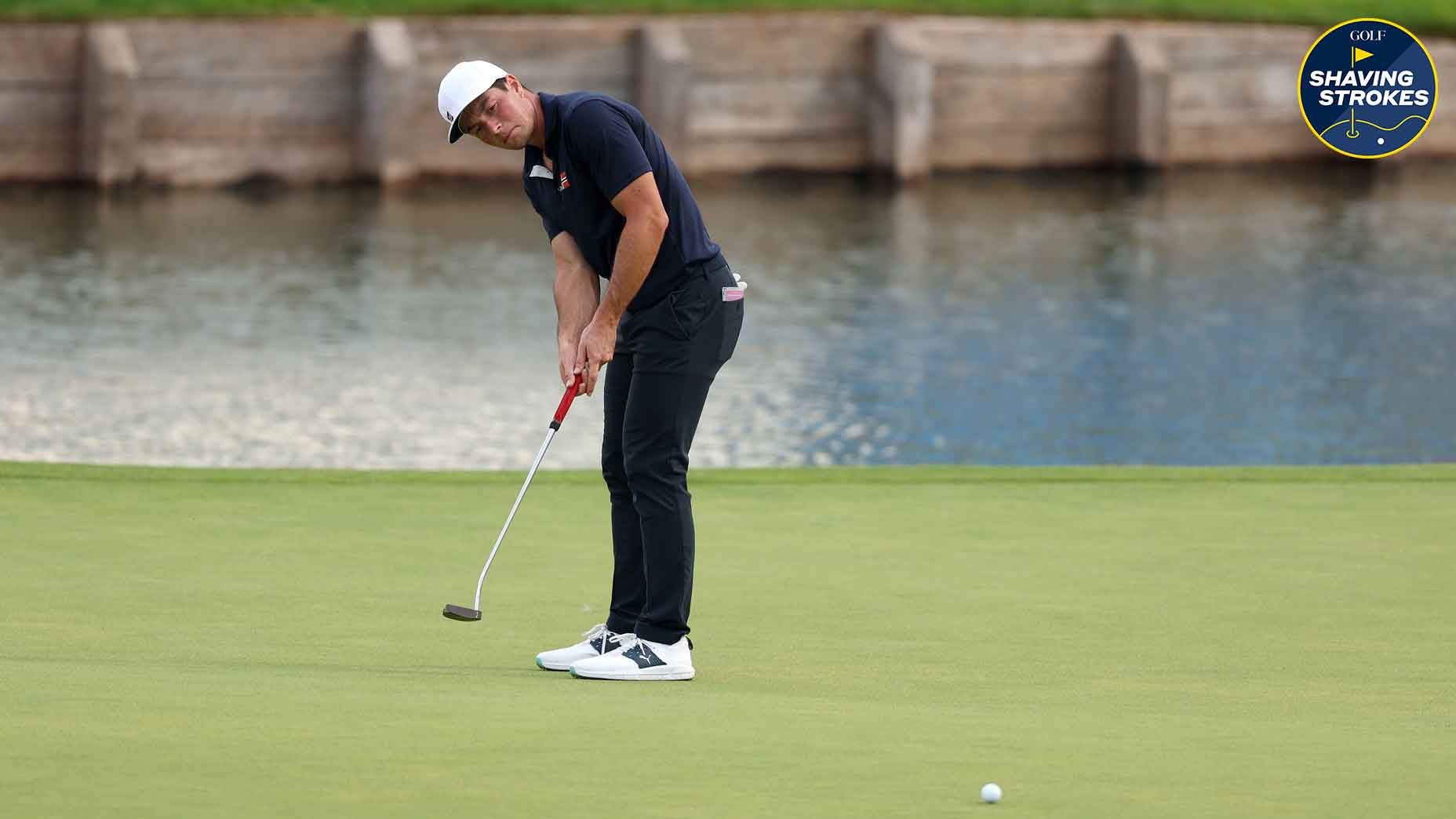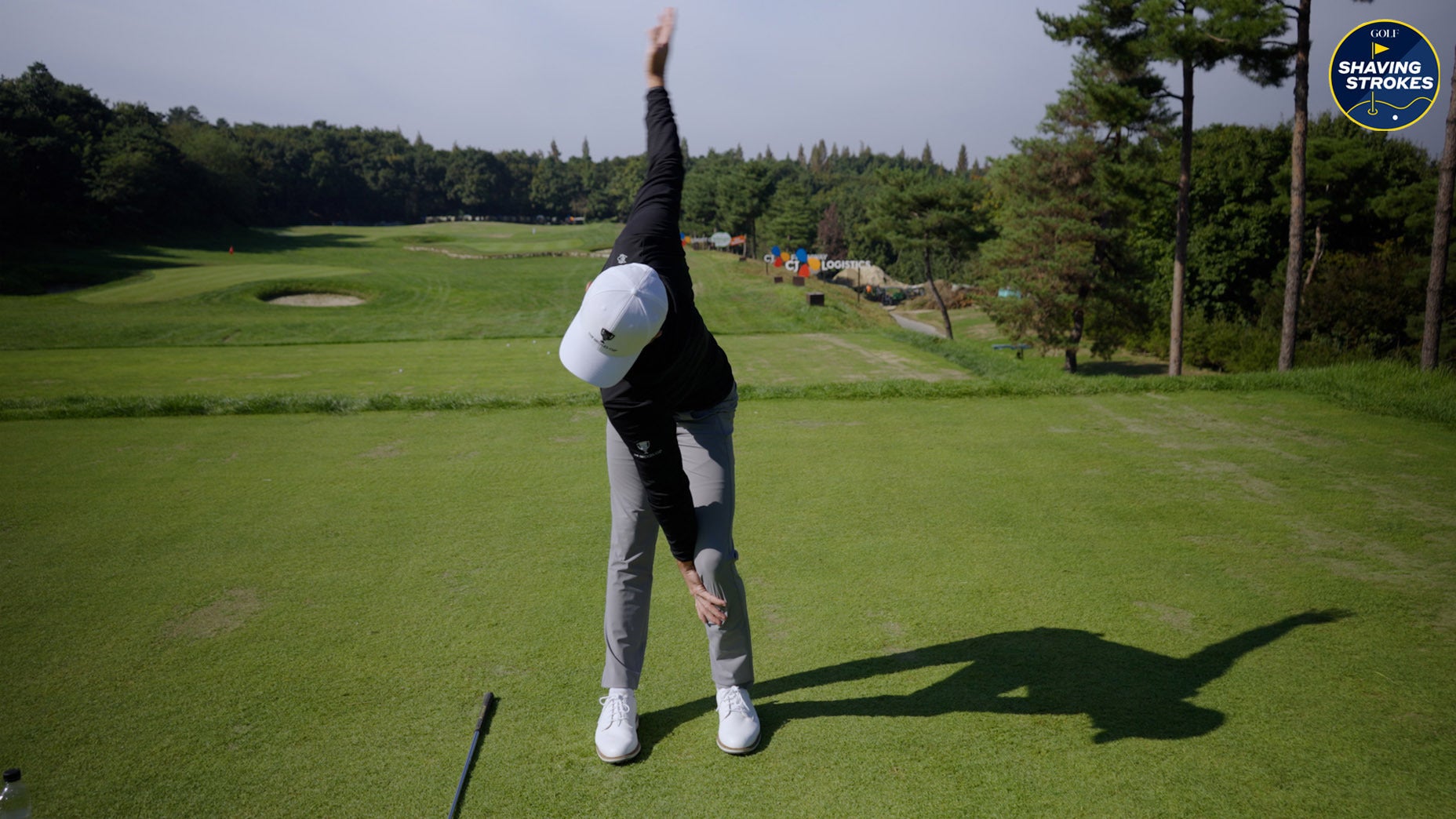Hooking the ball when releasing the club? Do this to fix the issue
- Share on Facebook
- Share on Twitter
- Share by Email

GOLF Teacher to Watch Daniel Gray shares some tips on how to avoid hooking the ball when releasing the golf club, leading to better shots.
Getty Images
Welcome to Shaving Strokes, a GOLF.com series in which we’re sharing improvements, learnings and takeaways from amateur golfers just like you — including some of the speed bumps and challenges they faced along the way.
Learning how to properly release the golf club is tricky for amateurs, but when done right it can lead to the flush shots we all dream about and see the pros hit on TV.
But the issue for many average players isn’t understanding the importance of releasing the club, it’s simply the concept of doing it correctly.
Many amateurs often try releasing the club by rolling the wrists through impact, thinking that “slinging” the club will generate more speed. But when this happens, it can often lead to big misses and plenty of inconsistencies — with the most likely outcome a major hook.
That’s why GOLF Teacher to Watch Daniel Gray is offering some tips below, sharing his thoughts to help each of us release the club the right way — which will lead to longer, straighter shots.
How to release the golf club without hooking
According to Gray, one of the most common questions he receives from students revolves around their release pattern with their irons.
“The question typically starts off with how to release their hands through impact without hooking the ball,” he tells me. “I start this conversation with players by evaluating their hand placement on the grip. Then I ask about their current sensations and concepts of releasing the club on the downswing and through impact.”
But because there are different types of grips, Gray says he caters his instruction to each player, making sure he doesn’t completely overhaul the way they’re holding the club.
Rory McIlroy shows how to ‘check and release’ a wedge shot from off the greenBy: Nick Dimengo
“I try my best not to alter the grip since accomplished players have a neurological connection to the clubface relative to their grip,” he adds. “I prefer to work with their lead arm and their wrist, forearm, and shoulder joint, which helps give them a feel of release that is relative to their grip type.
“We’re going to make a few assumptions,” he continues. “The first is that the player’s grip is neutral (meaning the lead hand is rotated to the 1:30 p.m. setting at setup, and the trail-hand position is matching the orientation of the lead hand so that the Vs between the thumbs align at setup). The second assumption is that the lead shoulder shifts in the downswing over the lead foot, helping it rotate away from the ground through impact.”
Next, Gray shares some photos that will help understand the positioning of your lead arm when releasing the golf club.



Using the photos above to help understand how the lead arm can rotate in the golf swing, Gray now dives into understanding the proper way to release the golf club in order to eliminate hooks.
“Players often worry about ‘flipping’ the face through impact, so they hold off the face for too long and reduce their potential for clubhead speed. They usually do this with their shoulder and forearm,” Gray says. “I like players to understand how the shoulder staying internal and the lead wrist supinating will help square the face — which is how the release works.
Phil Mickelson: The 1 flaw all poor ball-strikers have in commonBy: Nick Dimengo
“The best players hit draws with a club path that’s away from them, allowing the face to open to the target line and slightly closed to the club path.”
By better understanding the anatomy of these club release concepts, Gray hopes that it can solve any inconsistent ball-striking problems.
“Hopefully you can start to feel a full club release of the forearm, but also reduce the hook of your ball flight,” he adds.

Sure-Strike Training Aid by Sure Golf
$139.99
View Product
Latest In Instruction

Golf.com Contributor

Nick Dimengo
Golf.com Editor











